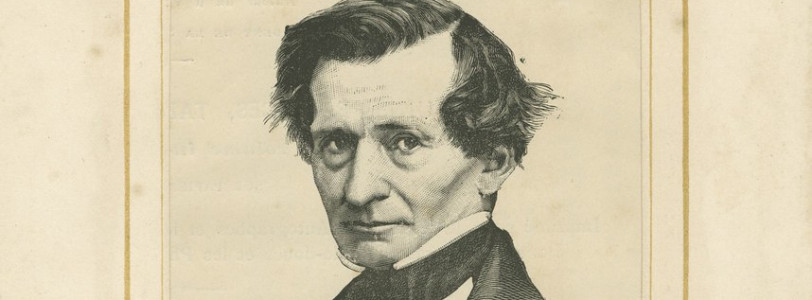The bombshell of the 19th century. Premiered at the Paris Conservatoire on the 5th of December 1830, Symphonie Fantastique alone solidified the entire legacy of 26-year-old Hector Berlioz. Influenced strongly by the symphonies and sonatas of Beethoven, this entity is bigger and better than any predecessor. It allows the listener to delve into Berlioz' most craved obsession and exposes his most disturbed dreams. Tortured by his mind, he turned to poison which amplified his obsessions to an unbearable climax in the last of the five movements.
The complexity of this colossal work is rooted in the use of an Idee Fixe, a short musical idea harnessed by Berlioz as a symbol for Harriet Smithson with whom his suffocating obsession lies. This point of unbreakable focus in the music is a sinister shadow for his unshakable attention on the unsuspecting actress. After first watching her perform in a production of Shakespeare's Hamlet at a theatre in Paris in 1827, he became entranced and was unable to prise her from the forefront of his mind for the next six years before they finally married.
Plagued by his fixation with Harriet Smithson, Berlioz turned to music to create a semi-autobiographical story about an artist struggling with this suffocating obsession. The opening movement is a daydream as the young musician, “afflicted with the sickness of spirit”, sees for the first time the woman that he so strongly desires. The relative serenity of this music becomes increasingly fragmented as the uncontrollable emotions and desires of love rush around his mind, and the obsession begins to take hold.
The next two movements document the young artists growing preoccupation and fascination of Harriet Smithson as her image haunts him relentlessly. The 2nd movement sees him attend an elegant ball, where the scene is set by a beautiful waltz, but the artist is unable to clear the actress from his thoughts as the idee fixe becomes woven into the sprightly melody. As the movement progresses, chaos gradually begins to ensue, until a breathless frenzy is reached.
Still transfixed, the 3rd movement takes the young artist to a countryside setting. He is granted relief from his thoughts and a rare pocket of serenity is instilled. Leaves rustle between the quiet conversation of two shepherds. Here he has hope, but its appearance is swift and has dissolved almost as soon it arrived, leaving behind an eternal loneliness and the distant rumbles of thunder.
The unbearable dread of rejection escalates and the extremities of fact and fiction blur as opium surges through the young artist's bloodstream, forming a twisted new reality. He falls into a deep sleep and in his hallucinations, he brutally murders Harriet Smithson. He is led to the scaffold and witnesses his own execution. This warped turn of events is portrayed by an erratic march with unpredictable outbursts, before the idee fixe sings, totally exposed. A whisper of a thought of Harriet Smithson before the axe is brought down, cruelly interrupting this brief moment of oasis.
In the final movement, “Dance of the Witches Sabbath”, the trapped artist, still within the inescapable clutches of the lethal drug, attends his own bizarre funeral. The now crude dance tune is accompanied by the piercing yowls and vulgar cackles of onlooking demons, witches and monsters. The death bells toll and endless parodies of Dies Irae, the death chant, taunt the spectating artist as he watches in terror.
Except, it was Berlioz himself that took the opium, fell into a deep sleep and envisioned himself killing Harriet Smithson before witnessing his own execution and spectating his own funeral.









0 Comments